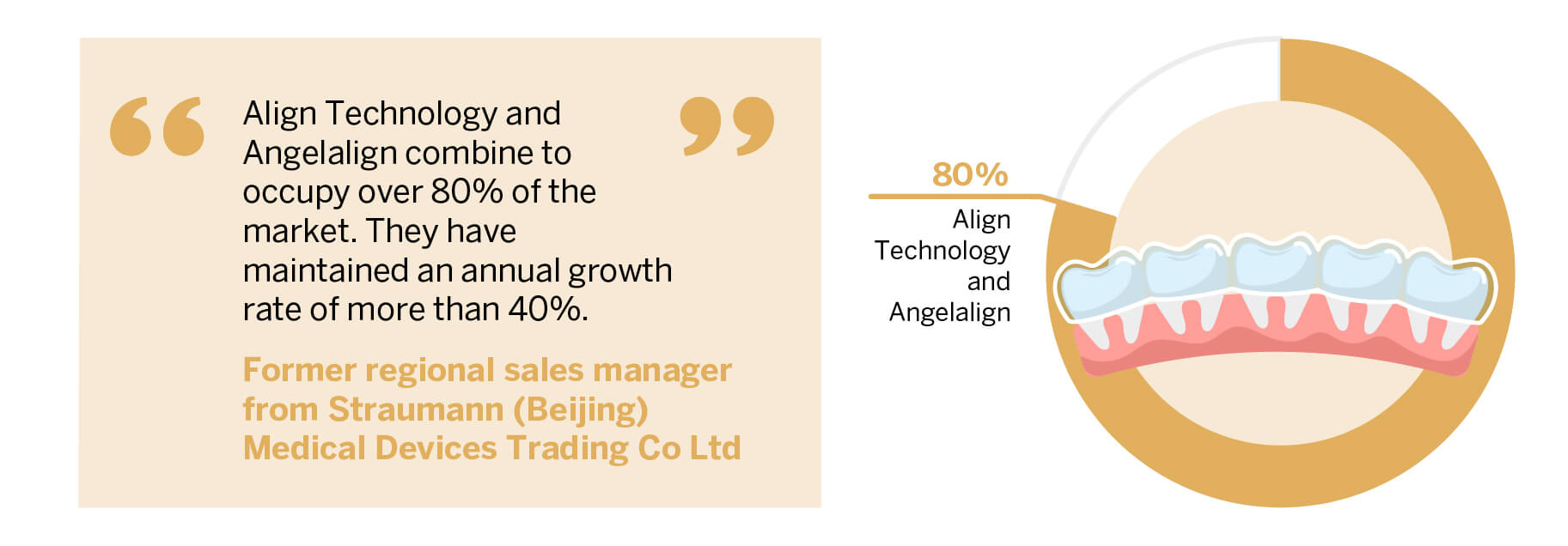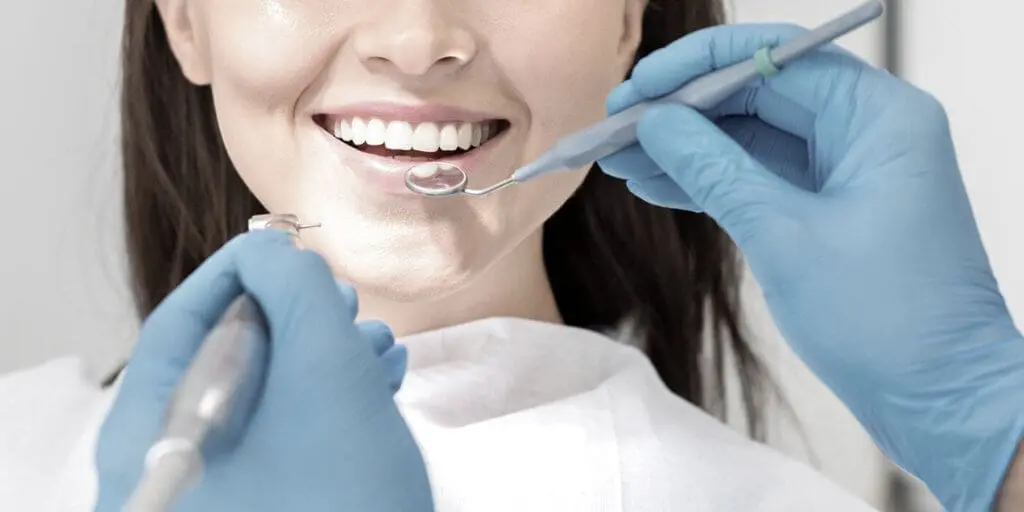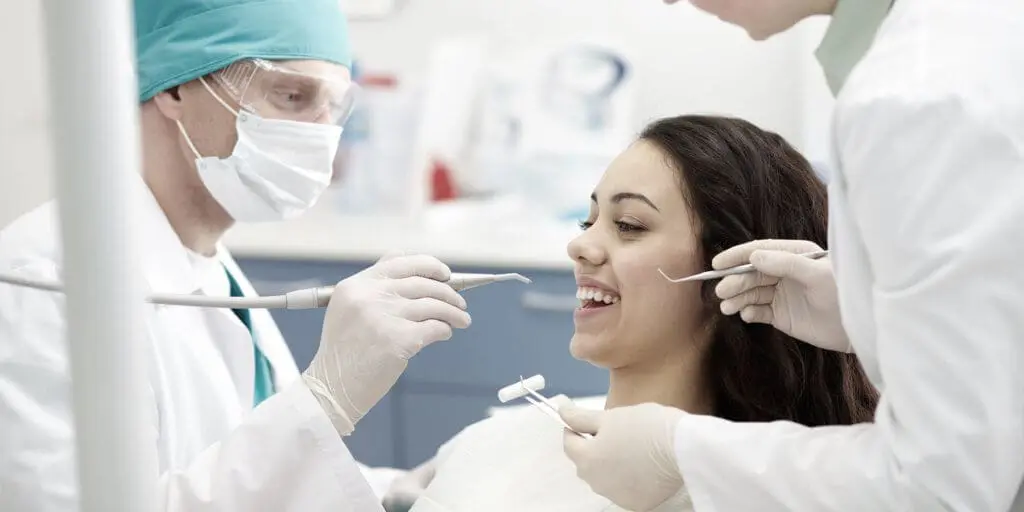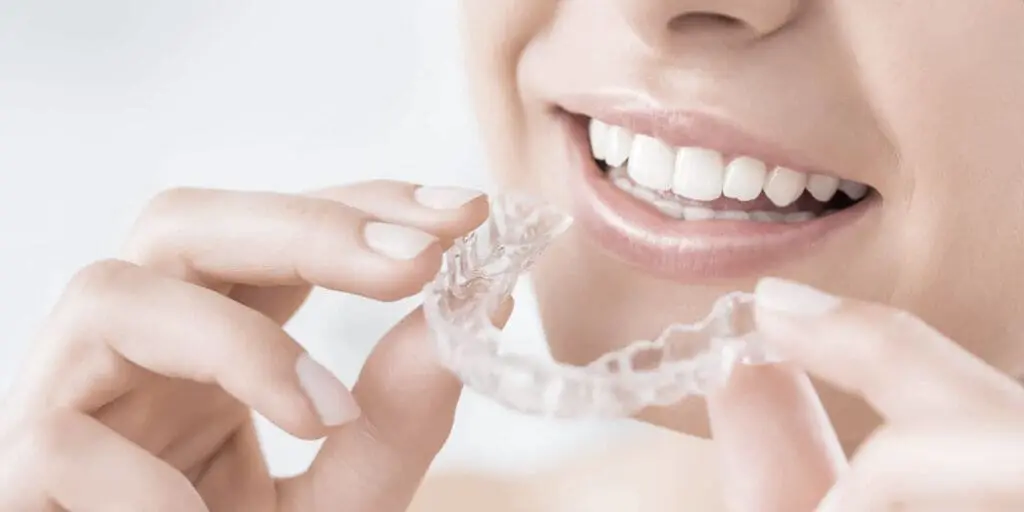Giving some scope of the market size, a former regional general manager from Beijing Arrail Shengbin Medical Technology Co Ltd (Arrail Group) stated that: “As of last year, China had about 100,000 dental institutions, about 200,000 dentists and more than 800 dental hospitals. In 2019, the dental market’s consumption was RMB 139.8bn.” Out of this, “RMB 20bn came from dental implant services and RMB 30bn from orthodontics.” While they noted a loss of about 2.2 billion teeth, only 2.46 million people received treatment.
At present, the former Arrail executive explained, the dental implant services penetration is “merely 0.15%” – but, if this were to rise by just 1%, “the number of dental implants installed will rise by more than 20 million every year.” The penetration rate of orthodontics is also miniscule, at 0.68%. Not only is there a “huge room” for these services to grow, but the specialist also commented that “the growth potential of dental implant and orthodontics services is way larger than that of excimer laser eye surgery and cataract surgery.” What’s more, only a small proportion of dental care institutions, approximately 20%, are able to perform both these types of procedures.
The aforementioned Arrail dental represents the higher end of the market, and “may currently be the most expensive chain brand in China”. Founded in 1999, it has grown to include 120 stores and about 1,000 staff across tier 1-3 cities, with revenue hitting RMB 1.2bn and profit at RMB 100m in 2019. What sets Arrail apart from its competitors, according to the former company executive, is its business model. “At the moment, dental clinics commonly attract customers either by organising extensive advertising campaigns or by ensuring high service quality.” Arrail is in the latter category, offering high-end, expensive services, while players using the advertising-focused method include Taikang Bybo Dental and Delun Dental.
There are downsides to each approach. “Aside from high advertising costs, a clinic that attracts customers through advertising also incurs high comparison costs and costs of hiring consultants who can prompt customers to make purchasing decisions.” Conversely, “if a clinic chooses to attract customers with high service quality, it does not need to spend very much on advertising, but its labour costs will be fairly high.” While the specialist notes that the outlay for these types of approach end up quite similar, Arrail benefits from strong customer loyalty.

Within invisible orthodontics, the two main players are Align Technology and Angel Align – which “combine to occupy over 80% of the market” and “have maintained an annual growth rate of more than 40%”, a former regional sales manager from Straumann (Beijing) Medical Devices Trading Co Ltd told Third Bridge Forum. Smartee is a second-tier company, while the third tier includes Dr.Clear Aligner, which was acquired by Bondent, Vincialign, Clickalign and Yimeiqi. While other disciplines within dentistry show underutilisation, “China’s invisible orthodontics market already turned into a red ocean last year.” The top companies are particularly concentrated in the tier 1-2 cities, but “in suburbs that the top three players pay less attention to, there is still some space for smaller players to survive.”
A newer entrant is Zhengli, which has a cooperation agreement with Switzerland-based Straumann. “Public reports show that Straumann has cooperated with many renowned orthodontists to promote the invisible orthodontic product it jointly launched with Zhengli Technology. Straumann boasts abundant resources for academic promotion.” In 2019, the pair launched Smyltec: “Straumann just acts as the general distributor of the brand, being responsible for marketing and distribution. Zhengli Technology designs and manufactures Smyletec clear aligners all by itself.”
Although Straumann acquired ClearCorrect, a clear aligner manufacturer, in 2017, the specialist thinks that market saturation and regulatory hold-ups will inhibit entry into China. “The company is planning to bring ClearCorrect into China. However, it takes a long time for a foreign medical consumables manufacturer to complete all the necessary registration and approval procedures as well as tests to get into China. If Straumann waited for ClearCorrect to complete all the procedures and tests, it would be left far behind other players in the market.” This was the rationale for its partnership with Zhengli. “If Straumann entered this market by introducing a new brand, it could hardly keep up with the market trends. Therefore, Straumann might as well cooperate with an existing Chinese player at first.”
Although the market is immense and undertreatment high, some segments are already starting to become saturated – but that doesn’t mean new companies can’t find gaps. For instance, while orthodontics has become a red sea market, there are still opportunities to be found in lower tier cities. And interest looks certain to grow.
The information used in compiling this document has been obtained by Third Bridge from experts participating in Forum Interviews. Third Bridge does not warrant the accuracy of the information and has not independently verified it. It should not be regarded as a trade recommendation or form the basis of any investment decision.
For any enquiries, please contact sales@thirdbridge.com





